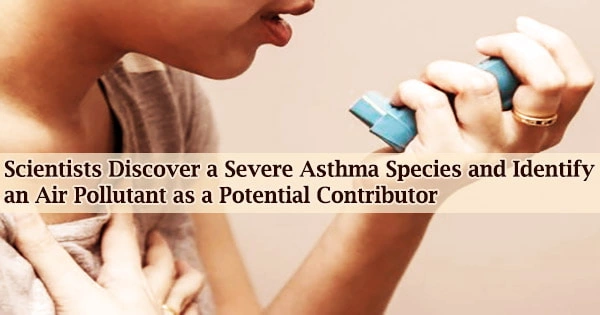More than 300 million individuals worldwide suffer from asthma. According to Hyunok Choi, an associate professor at the Lehigh University College of Health, the most severe symptom, known as non-Th2, or non-atopic childhood asthma, accounts for the majority of cases (more than 85 percent), particularly in low-income nations.
However, it is unclear if non-Th2 is a discrete disease (or endotype) or simply a combination of symptoms (or phenotype).
Asthmatics always have underlying airway inflammation, which may usually be managed with a combination of quick-relief and long-term controller medications. Some people, however, may not respond well to inhaled corticosteroids or other long-term control medications, indicating that they have severe asthma.
“Non-Th2 asthma is associated with very poor prognosis in children and great, life-long suffering due to the absence of effective therapies,” says Choi. “There is an urgent need to better understand its mechanistic origin to enable early diagnosis and to stop the progression of the disease before it becomes severe.”
People with difficult-to-treat asthma have asthma that is uncontrolled despite utilizing high-dose controller medications. Having another chronic health condition, poor inhaler usage, and/or inconsistent use of prescription drugs can all make it more difficult to treat asthma.
According to studies, approximately half of all children with uncontrolled asthma will grow up to be severe adult cases. However, a one-size-fits-all treatment approach for asthma, which is now the standard, is ineffective and, according to Choi, partially responsible for the disease’s rising economic burden.
Non-Th2 asthma is associated with very poor prognosis in children and great, life-long suffering due to the absence of effective therapies. There is an urgent need to better understand its mechanistic origin to enable early diagnosis and to stop the progression of the disease before it becomes severe.
Hyunok Choi
“The primary reason for lack of therapeutic and preventive measures is that no etiologic, or causal, driver has ever been identified for the non-Th2 asthma,” says Choi.
For the first time, an epidemiological investigation conducted by Choi has revealed that not only is non-Th2 a unique disease, but that airborne Benzo(a)pyrene, a consequence of fossil fuel combustion, is a plausible inducer.
Choi and her colleagues are the first to link air pollution to the most difficult type of asthma, the severe variety that is resistant to current treatments.
The team describes their results in an article recently published online in Environmental Health Journal called “Airborne Benzo(a)Pyrene May Contribute to Divergent Pheno-Endotypes in Children.”
Asthma is a catch-all name for a number of disorders with similar symptoms. Asthma is divided into two types of symptoms: T helper cell high (Th2-high) and T helper cell low (non-Th2). Early-childhood allergies to common contaminants such as pet dander, tree pollens, or mold are linked to Th2-high.
Non-TH2 is, on the other hand, unrelated to an allergic reaction. The non-Th2 type, which is distinguished by the fact that it is not allergy-related, is significantly less well understood than the TH-2 type, and it has the potential to develop into a serious or difficult-to-treat condition.
“The identification of non-Th2 asthma as a distinct disease, with early exposure to Benzo(a)pyrene as a driver, has the potential to impact tens of millions of sufferers, since this would make it possible to intervene before the onset of irreversible respiratory injuries,” says Choi.
The researchers compared two groups of children from Ostrava, a Czech industrial city, and the surrounding semi-rural area of Southern Bohemia: 194 children with asthma and 191 children without asthma.
Ostrava is an industrial city with a high degree of coal mining, coal processing, and metallurgical refining, according to the study.
At the time of their analysis in November 2008, the district-level ambient mean for Benzo(a)pyrene was 11 times higher than the acceptable outdoor and indoor air quality standard.
Patients with severe asthma are given the greatest dose of inhaled corticosteroids possible, along with a second controller and/or oral corticosteroids. Despite utilizing high-dose medications, limiting risks, and adhering to their treatment plan, their asthma is frequently uncontrolled.
Allergic asthma, eosinophilic asthma, and non-eosinophilic asthma are the three forms of severe asthma. Not only was higher Benzo(a)pyrene exposure linked to an increased risk of non-Th2 asthma, but it was also linked to lower levels of systemic oxidants.
“Contrary to the current body of evidence supporting adult onset of non-atopic asthma, our data suggest for the first time that the lung function deficit and suppressed oxidative stress levels during early childhood are critical sentinel events preceding non-atopic asthma,” says Choi.





